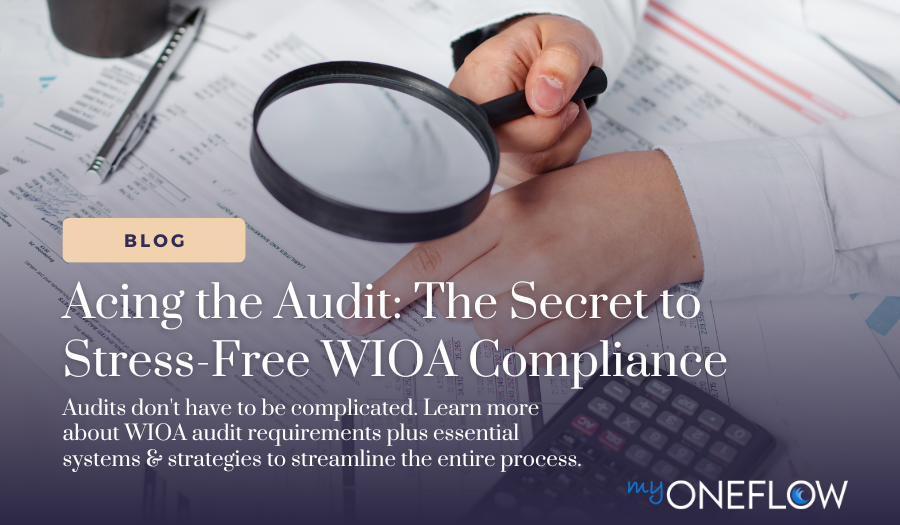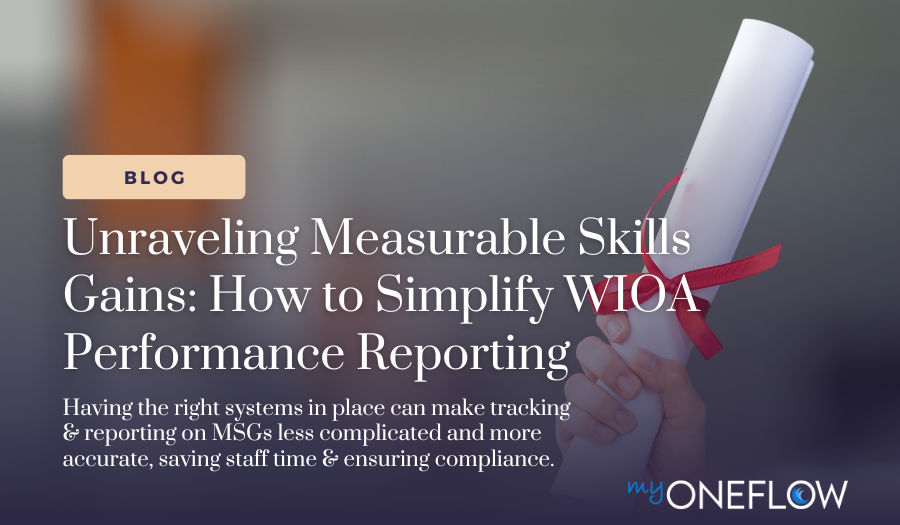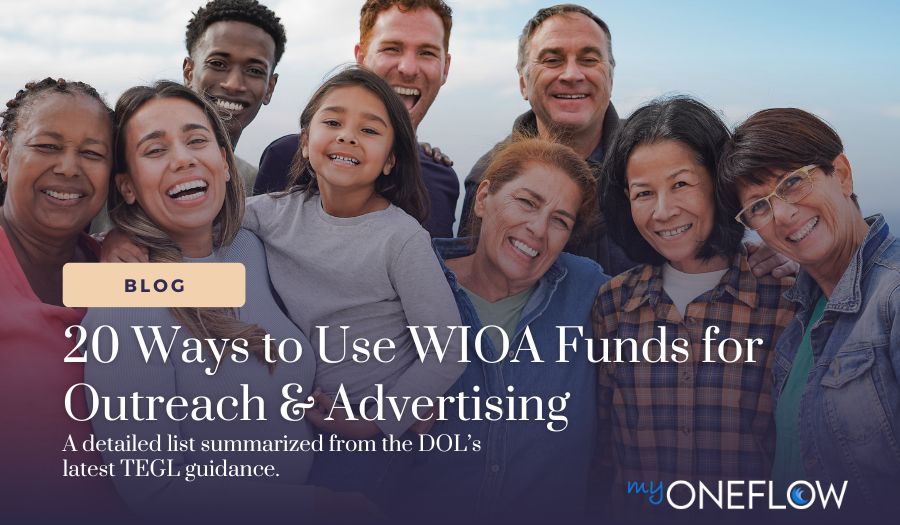Unraveling Measurable Skills Gains: How to Simplify WIOA Performance Reporting
Measurable Skills Gains (MSGs) are a fundamental aspect of evaluating participant progression in WIOA-funded programs and constitute a significant...
4 min read
myOneFlow Staff Jul 14, 2023 1:16:05 PM

If you're a workforce or adult ed program receiving WIOA funding, chances are you're audited annually. While the thought of audits might conjure mental images of hours spent sorting through paperwork and files, it doesn't have to be that complicated. With the right strategies, systems, and technology, your organization can ace audits without batting an eye. This blog will demystify the process by breaking down WIOA audit requirements and offering actionable strategies for simplifying and streamlining the compliance process.
Generally, entities that spend $750,000 or more in federal awards in a year are required to undergo an audit. These audits are conducted by independent auditing firms or the government's Inspector General's office, depending on the specifics of the funding. Typically, audits occur annually, but the frequency can vary based on specific circumstances or findings from previous audits. The purpose of these audits is to ensure that federal funds are being used appropriately, efficiently, and per WIOA regulations. The audit will include a review of financial statements, internal control systems, and compliance with specific program requirements, providing a comprehensive evaluation of an entity's adherence to WIOA stipulations.
Failing an audit as a WIOA service provider can have serious consequences. Here are some potential risks:
Maintaining stress-free compliance can be achieved through a combination of best practices. First and foremost, comprehensive training for all staff managing and reporting WIOA funds is essential. This ensures that everyone understands their responsibilities and the specific requirements of WIOA.
Secondly, meticulous documentation is critical. Keeping detailed records of all transactions, decisions, and actions related to WIOA funds can provide invaluable support during an audit. It's also crucial to have a well-defined system for storing and retrieving these documents.
Lastly, adopting a proactive approach to compliance is highly beneficial. Conduct regular internal reviews to ensure ongoing compliance instead of waiting for an audit to identify issues. Implementing these best practices can significantly reduce stress around WIOA audits and foster a culture of transparency and accountability within your organization.
Technology plays a crucial role in simplifying the process of document and fiscal tracking for audit purposes. Advanced WIOA case management solutions like myOneFlow can automate data collection, organize records efficiently, and ensure easy retrieval of documents when needed. They can track financial allocations and transactions from the grant to the participant, providing a clear trail of expenditures that auditors can follow. Furthermore, these systems can provide alerts for discrepancies or non-compliance issues, allowing organizations to address potential problems proactively. In addition, relying on a single platform provides a secure, centralized repository for all necessary documents, eliminating the risk of loss or damage to physical records. This streamlines the audit process and enhances the accuracy and integrity of the data being audited, leading to more reliable audit outcomes.
myOneFlow is unique in leveraging configurable user roles to help organizations streamline the audit process. Users can be assigned one or more roles with varying levels of capability, such as approvals, view/edit, change or delete roles, and more. This ensures that only authorized personnel can access sensitive data, reducing the risk of unauthorized changes that could complicate audits. Additionally, the option to lock edits for some entities after a specific time period provides auditable records that are protected from accidental alterations.
By allowing granular control over access and permissions, audits become more efficient and less prone to errors. Organizations can create a specific auditor user role and grant read-only, limited-time access to necessary files and records. Auditors can remotely log into the system and securely view all requested records. With this structure, myOneFlow maintains a high level of security and facilitates a smoother, more straightforward audit process.
While WIOA audits may initially seem daunting, they can be made significantly less stressful through understanding, preparation, and the strategic use of technology. By knowing who needs to be audited and what the audit entails, and by implementing best practices like thorough training, meticulous documentation, and proactive compliance strategies, organizations can easily navigate the audit process. Leveraging technology, particularly myOneFlow with its configurable user roles, can further simplify document and fiscal tracking, making audits more efficient and manageable. Contact our team today to learn how myOneFlow's unique features streamline operations and compliance management for adult ed, workforce, and apprenticeship programs nationwide.

Measurable Skills Gains (MSGs) are a fundamental aspect of evaluating participant progression in WIOA-funded programs and constitute a significant...
.png)
The Workforce Innovation and Opportunity Act (WIOA) is rooted in a bold ambition: “to strengthen the United States workforce development system...

The U.S. Department of Labor recently released a new Training and Employment Guidance Letter (TEGL), TEGL 03:23, to provide workforce agencies and...